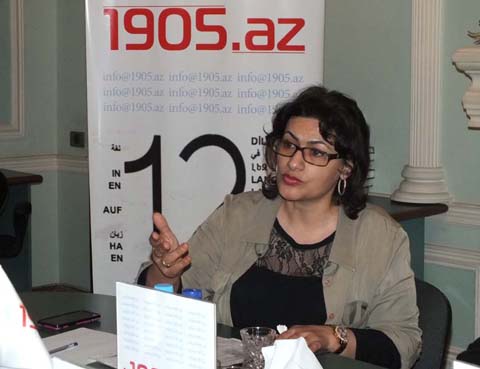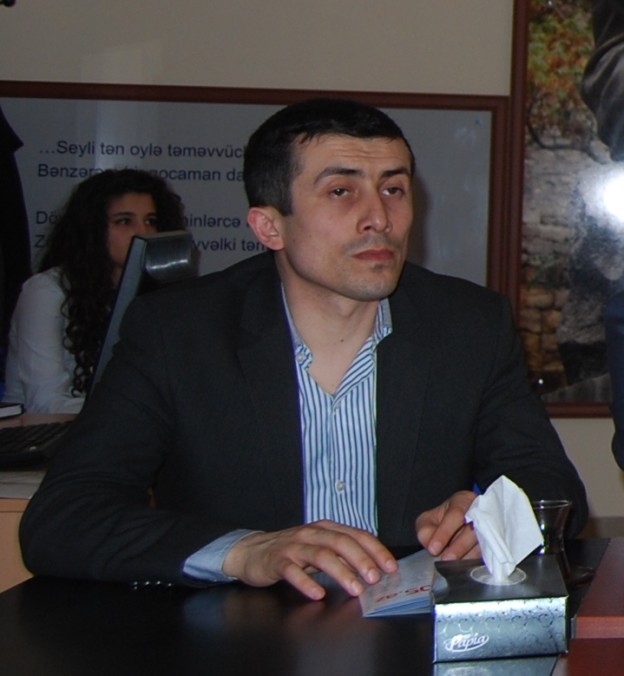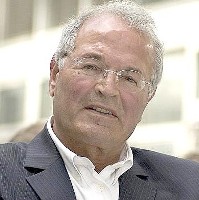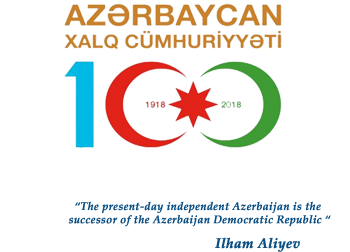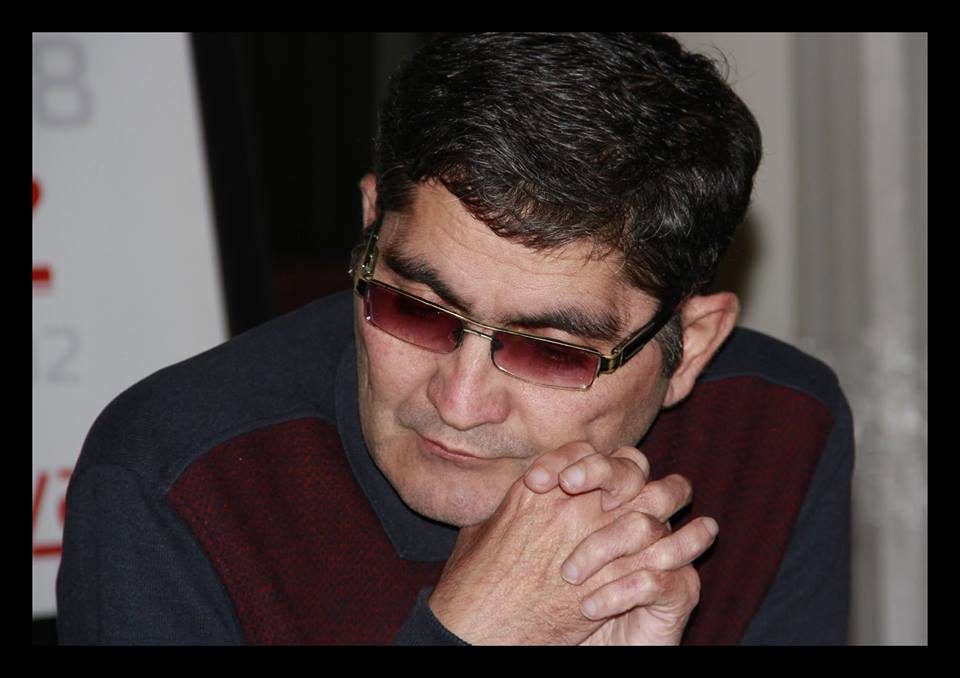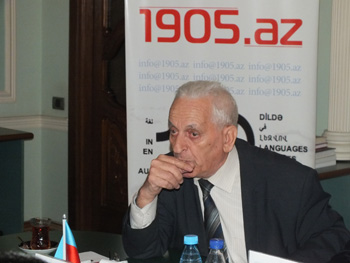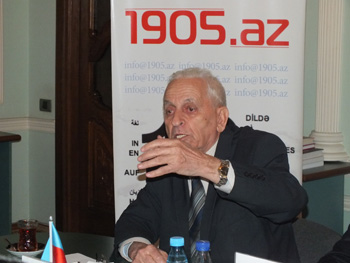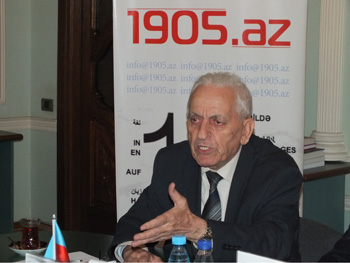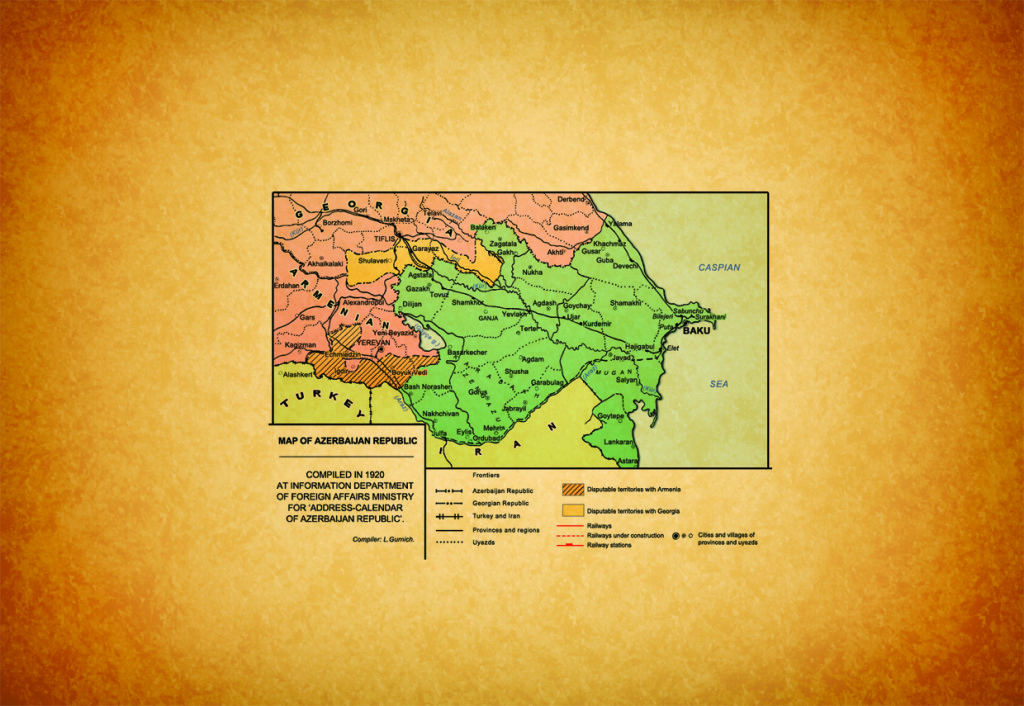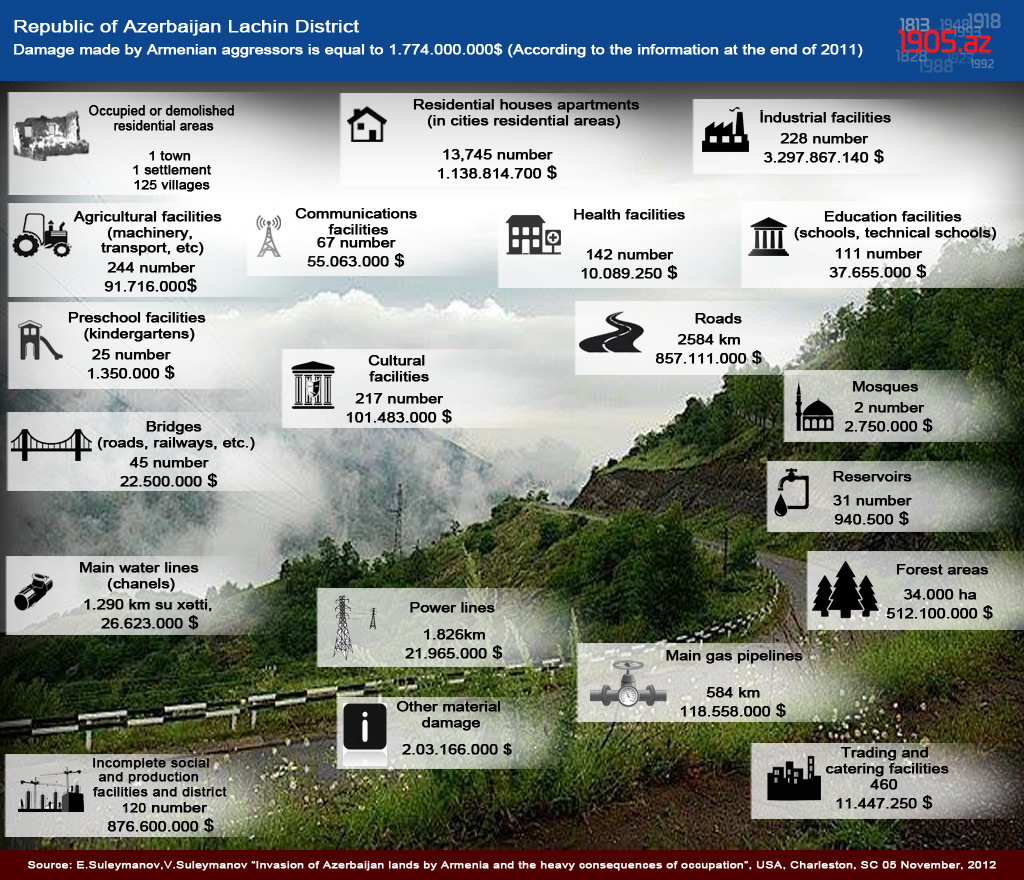The Genocide of Armenian Dashnak forces against Turkish-Moslem population in 1915-1918 For a long span of time, Armenian ideologist and their stooges are seeking to prove worldwide that an act of genocide had been committed against the “long-suffering” Armenian people on the territory of Ottoman Empire in 1915.
Prior to the disintegration of the Soviet Union, the propaganda was directed against Turkey to charge in passing other Turkic peoples with the genocide as well. The policy of hatred, previously pursued by Tsarist Russia against Ottoman Turkey, was taken up by Soviet ideologists, this time against the Turkish Republic. Note that in the 1960s this mendacious political line came to pick up strength and develop.But who suffered genocide in reality? On the eve of the First World War, Commander in Chief of the third Ottoman Army Enver-pasha, following his meeting and subsequent negotiations with Armenians, came to the conclusion that in the event of war they (Armenians) were not going to defend borders of Ottoman Empire. The reason was that Tsarist Russia, irrespective of the outcome of the war, promised to grant autonomy to the Armenian population of Ottoman Empire. In doing so, Russians were successful in winning over Armenians to their side and exploiting them during the war against Turkey. The situation changed for worse after Nicholas II arrived, on the eve of the First World War, in Caucasus and offered local Armenians to enter into alliance with Russian to combat Ottoman Empire. The Tsar ended his speech as saying: “Let ships under Russian banners sail freely in straits Bosporus and Dardanelles. Let the Armenian people establish its own independent state on the territory of Ottoman Empire”. (Nesir Yucer. “A military operation of Ottoman Army on the territory of Azerbaijan and Daghestan during the First World War”. Ankara, 1995; Baku, 1999, p.21 ). It was the Russian Tsar’s severe statement that enabled Armenians to involve in the war against Ottomans. And what is more, Armenians ideologists were given the Armenian church’s blessing to the war. As is known, on 1 November 1914 the Russian Army went through Caucasus to cross borders of Ottoman Empire. Both Russians and Ottomans sustained heavy losses in the battles of Kars, Ardagan and Batumi. The battle of Sarikamysh ended with capture of 90.000Turkish soldiers and officers (Jastin McCarthy. “Armenian terrorism”. Ankara, 1984 p.89). It was severe winter and good training of the Russian Army that made it possible to gain victory over Ottomans. Russian Army’s entry into East Anatolia created favorable for Armenians to commit act of genocide against Turks. The point is that Armenians, conscripts of the Russian Army, joined Armenians of East Anatolia, declaring war against the peaceful Turkish population. They killed innocent people, drove them out of old haunts. Auspicious conditions arose to realize behests and century-long plans of Armenian ideologists aimed at the establishment of the so called “Great Armenia”. As a retaliatory strike, the Ottoman government had to take drastic measures. I mid-May 1915, the Armenian populations of Van, Bitlis and Erzrum were debarred from military service (George de Maleville. “The Armenian tragedy of 1915”, Baku, 1990) and thus the neutrality of Armenians was achieved during the battle between Ottomans and Russians/ English. At the same time, Ottoman command instructed Turks and other Moslem countries to refrain from violence against Armenians. The London “Times” of 30 January 1919 wrote: “there was set up a special commission to ensure safety of property and habitation of the resettled Armenian population” (p.6). The commission was responsible for census of the Armenian population. Commission’s documents stressed that on termination of the war the Armenian population would come back to the place of their residence (David Bargard. “Turkey and the West”. New-York, 1986, p. 50-51). The Entente propaganda machine and Armenian nationalists tried to prove that more than one million Armenians had been killed on the territory of Ottoman Empire during the First World War. To corroborate the fact, they referred to 2.5 mil Armenian population prior to the war. However, according to official data of Ottoman government, the number of Armenians prior to the war composed 1300000 (US Congress Library. “Bristol documents”, New-York, 1971). Note that half of this population resided on the territory where combat operations were carried on. During the First World War, half-million Armenians moved from turkey to Caucasus, other places. Also, 150,000-200.000 Armenians migrated to Europe and the USA. It may be supposed that approx. 200,000 Armenians died during the war. It is natural that among them there were not only those lost of cold, hunger, diseases. Many were missing. The same “Times” Wrote: “an indisputable truth is that during the war 2 millions of the Turkish population died” (p.7). Meanwhile, Armenian ideologists are eager to persuade the world public opinion that on 25 April 1915 minister for Internal Affairs Talat-pasha allegedly issued order to exterminate Armenians of Ottoman Empire on a state scale. However, Armenian ideologists have so far failed to submit an original of the document to prove the fact. We can safely assert that no document of the kind had ever existed. Noteworthy is the fact that the Paris conference checked secret talks of Ottoman leaders but failed to detect any documents on mass extermination of Armenians. Quite the contrary, European inspectors discovered that Ottoman government had taken appropriate measures and given instructions aimed at ensuring security of the resettled Armenian population. It should be remembered that the first genocide and mass extermination of Moslem population occurred on 14 March 1915. It lasted two days. A great number of people was atrociously tortured. Under the patronage of the annexationist Russian Army, Armenians were successful in establishing the so called Armenian Van State (“Armenian genocide: myth and reality”, Baku, 1992). Following the Van genocide, the joint Russian – Armenian Army started invasion of Bitlis, and a vast territory, stretching to Mosul, fell under the control of Armenian Dashnak troops (Ibid, p.98). Prior to mid-July 1915, about250.000 Armenians had been resettled to the Van Lake area. Worthy of notice is that not more than 50,000 Armenians had lived in the area before. It passes all understanding, how many atrocities Armenians had committed on these territories, commencing from mid-July 1915. As a result of counter-offensive of the Ottoman Army, the Armenian population, jointly with the retreating Russian Army, began leaving the territories. The 200.000 Armenian population, accompanied by remains of the Russian Army, bent its steps to the territory of South Caucasus (George de Maleville. the Armenian tragedy of 1915, p. 103). True, the population was in many place subjected to the attacks of Kurds, since the latter suffered from the Armenian genocide as well. To be impartial, many documents were compiled by non-Moslem authers, from this point of view, of great interest are Bristol documents kept at the US Congress Library. It says that according to precise statistical data, the number of Armenians lost in 1912-1922 made up approx. 600,000 (US Congress Library. Bristol Documents, New York, 1971). So it is slanderous inventions of Armenian propagandists that the number of Armenians lost reached 1.5-2 mil. “Ordinarily, people are lost during the war” (Ibid). Deserving consideration is the fact that the Bristol Documents refer to 2.5 mil Turks killed Note that the fate of Turks proved to be more tragic than that of Armenians. Analysis of the documents available is illustrative that it was Turks, not Armenians, who suffered from genocide on the territory of Ottoman Empire during the First World War. In February 1917, the 300-year power of Romanovs dynasty was overthrown, and a Provisional Government set up. Acting on behalf of the Provisional Government in Transcaucasia was a special Transcaucasian Committee. The Provisional Government announced that the destinies of peoples residing on the territory of Russia would be determined following the termination of the First World War. However, as a result of forcible seizure of power by Bolsheviks, headed by Lenin, in 1917 expectations of all the peoples were dispelled. In November 1917, a Transcaucasian Commissariat was set up in Tiflis to include Azerbaijanians, Georgians and Armenians. The majority was made by Armenians. Meanwhile, Bolsheviks headed by S.Shaumyan carried out their activities in Baku. (Address calendar of the Azerbaijan Republic for 1920. In Turkic and Russian Ed. by A.I.Stavrovskiy. Baku, p. 76-88). These forces became increasingly active after the advent of Russian Bolsheviks to power. Attacks against “Musavat” Party activists, backed by the majority of the local population, intensified. Earlier 1918, representatives of “Dashnaktsutun” and Bolshevik Parties joined to struggle against Musavatists. It’d be appropriate to remind that Armenians disposed of the greatest military potential in Transcaucasian Commissariat. Instead of going to the front line, Armenian military units lingered at Irevan province and, taking occasion, shelled hundreds of Moslem villages, drove the local populations out in return for Armenian refugees from Turkey. It has to be kept in mind that the Moslem population of “Beyuk Surmeli” region was fully banished, Nakhchivan destroyed, and, finally Armenian cutthroats inflicted bloody reprisals against the Azerbaijanian population of Baku, Shemakha and Guba. On 30 March 1918, following thorough training, joint Dashnak and Bolshevik forces headed by Shaumyan committed an act of genocide in Baku. From 30 March to 2 April, upwards of 12,000 Azerbaijanians, including old men, women and children, were brutally killed in Baku. Protocols of documents and interrogations of eyewitnesses reaffirm that contributing to all the atrocities were Armenian intellectuals who involved dishonest and shameless Russian and Armenian soldiers in these abominable offences. Tens of documents are available to corroborate the fact that Armenian intelligentsia and church took an active part in incinerating and defiling corpses of Moslems. A marvelous building of Baku – “Ismailiyya” was burned down, a printing – house of “Achyg sez” newspaper destroyed, most residents left the city and, in quest of safe place, had to move to Central Asia and Iran. Following the Baku pogroms, Menshevik newspaper “Nash golos” wrote: “There were burnt human corpses in heaps and separately scattered all over” Strongly destroyed as a result of shelling was “Teze pir” mosque in the center of Baku. Note that Armenian atrocities committed in Baku recurred later in Guba, Khachmaz, Lenkoran, Hadjigabul, Salyany but most tragically in Shemakha. Suffice it to note that 7,000 were killed in Shemakha, 16,000 – in Guba, 1,000 in Lenkoran and Astara, 2,000 in Salyany and Hadjigabul. Their dueling houses were burnt, property confiscated. In 1918, an extraordinary commission of inquiry was set up to investigate the facts of genocide against the Azerbaijanian people. Most of those giving testimony were Russians and Jews, and their commentaries and statements, properly documented in 1918-1919, are an eloquent testimony to the crimes of Armenian bandits. On 28 May 1918, there was declared an independent Azerbaijan Democratic Republic. Once supportive of Tsarism in their struggle against neighboring peoples, Armenians began laying territorial claims to Georgia and Azerbaijan. Armenian claims were so impertinent that covered half of the territories of Ottoman state, Azerbaijan and Georgia. It should be added that Armenian stooges abroad showed increasing activities in concerting regular crimes in Azerbaijan. In March 1920, when the Soviet Russia was engaged in seizing the power in independent Azerbaijan, Armenian nationalists mutinied in Karabakh. The Government of Azerbaijan sent its troops to suppress the mutiny. Taking the occasion, the 11th Red Army seized Azerbaijan on 27 April (Jamil Hasanly. “Azerbaijan in the system of international relations, 1918-1920”. Baku, 1993, p.249). After the Soviet power had consolidated in Armenia, Bolsheviks succeeding in annexing ancient lands of Azerbaijan, Zangezur. Without any grounds, the Caucasian Bureau of the Russian Communist Party passed a resolution on the establishment of Armenian autonomy in Karabakh. Incontrovertible is the fact that in 1918-1920 Dashnaks wiped hundreds of Azerbaijanian villages off the face of the earth, killed thousands of women, old men and children in Baku, Shemakha, Zangezur, Surmeli, Irevan, Echmiadzin, Sharur, Basarkecher, Gazakh, Gyandja, Karabakh. During the genocide, 565.000 out of 575,000 Azerbaijanian population of Armenia were killed or driven out (Kordokyan Z. The population of the Soviet Armenia, 1831-1931 Yerevan, 1932, p.89). Prior to the establishment of Soviet power in Armenia, i.e. November 1920, there lived just 10,000 Azerbaijanians on the territory of Armenia. In 1922, 60,000 Azerbaijanian refugees succeeded in coming back home (Ibid, p.89). Following the end of the Second World War, Armenians re-laid territorial claims to Azerbaijan. In November 1945, First Secretary of the Communist Party of Armenia G.Kharutyunov addressed Stalin with a request to transfer Nagorno Karabakh to Armenia. It was A.Mikoyan who made a particular contribution to laying such claims. It was no mere coincidence that on 23 December 1947 the Council of Ministers of the USSR adopted a decision “On Resettlement of Collective Farmers, Other Azerbaijanias from the Territory of the Armenian SSR to Kura-Arax Lowland (Ovalug) of the Azerbaijan SSR”. As a consequence, 150,000 Azerbaijanians were, contrary to the law, forcibly moved from Armenia allegedly to settle on the vacant territories Armenians from abroad. After the devastating war, families without bread-winners, starving collective farmers gad unexpectedly been moved to lowlands of Azerbaijan (Deportation Baku, 1998, p.84). Over a short span of time, approx. 10 ths. people died from hunger, diseases. The deportation of Azerbaijanians came to end in 1988. In other words, the Soviet Government and law-enforcement bodies of Armenia, instead of protecting the peaceful population, were engaged in instigating Armenian terrorists. Prior to December 1988, Azerbaijanians and Kurds-Moslems in the Armenian SSR had been banished from the territory of Armenia. About 300 people were tortured and killed, approx. 300,000 driven out of the Armenian territory. Thus, the Azerbaijanian population of Armenia has four times been tortured and banished from their homes in the 20 century: The first stage 1905-1907. The second stage 1915-1920. The third stage 1948-1953. The fourth stage 1986-1988. But Armenians have not been satisfied with this. Between 1988-1993, about 20% of Azerbaijanian lands were seized by Armenian armed forces and more than 1 mil banished. Unspeakable are atrocities committed by Armenian bandits against the population of Karabakh settlement of Khodjaly on 25-26 February 1992. According to the premeditated plan, Armenian and Russian Armed Forces attacked the town at nighttime. Thousands of people begged for help to escape from bandits. This was one of the most appalling crimes of the 20-century. Suffice it to say that 830 peace civilians were shot to death, hundreds of infants frozen, corpses disfigured. The historical data are indicative that thousands of Moslems were killed and brutally tortured in 1914-1918. Guided by the UN Resolution of 11 December 1946, as well as Agreement of 9 December 1948, it may convincingly be proved that the Armenian Dashnaks have committed grave, monstrous crimes against humanity and conspired genocide against the Turkic population.
Anar Iskenderov
Assistant Professor at Baku State University
Journal “IRS-HERITAGE”, 2003, number 5, pages 30-35

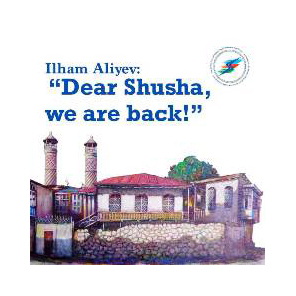

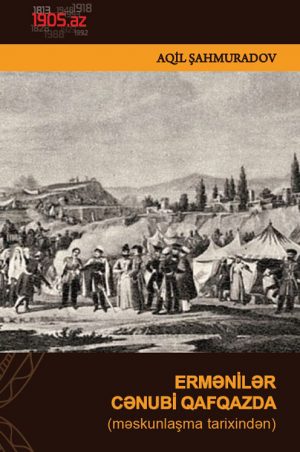





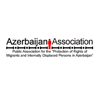


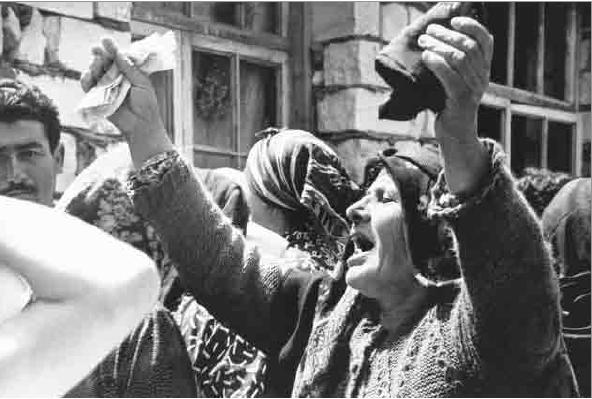
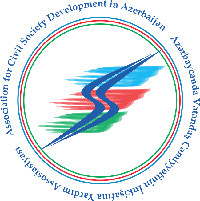
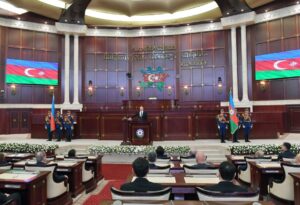 Inauguration ceremony of President of Azerbaijan Ilham Aliyev was held
Inauguration ceremony of President of Azerbaijan Ilham Aliyev was held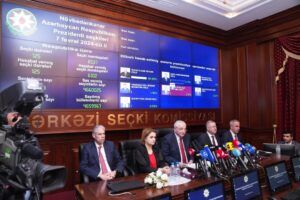 Ilham Aliyev wins presidential election with 92.05 percent of votes VIDEO
Ilham Aliyev wins presidential election with 92.05 percent of votes VIDEO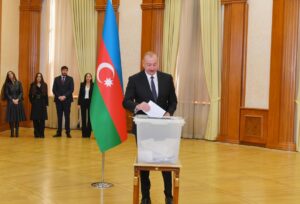 President Ilham Aliyev, First Lady Mehriban Aliyeva and family members voted in Khankendi VIDEO
President Ilham Aliyev, First Lady Mehriban Aliyeva and family members voted in Khankendi VIDEO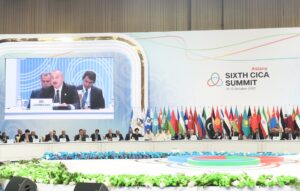 Plenary session of 6th Summit of Conference on Interaction and Confidence Building Measures in Asia gets underway in Astana. President Ilham Aliyev attends the plenary session VIDEO
Plenary session of 6th Summit of Conference on Interaction and Confidence Building Measures in Asia gets underway in Astana. President Ilham Aliyev attends the plenary session VIDEO President Ilham Aliyev was interviewed by Azerbaijani TV channels in Prague VIDEO
President Ilham Aliyev was interviewed by Azerbaijani TV channels in Prague VIDEO



